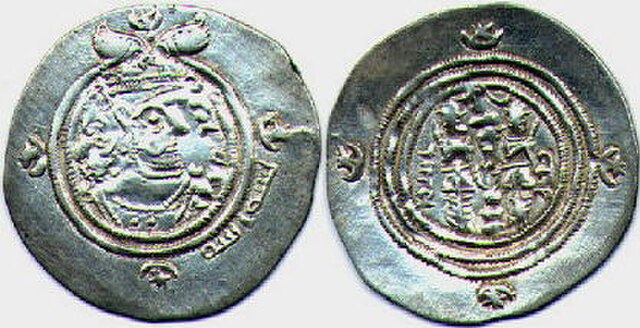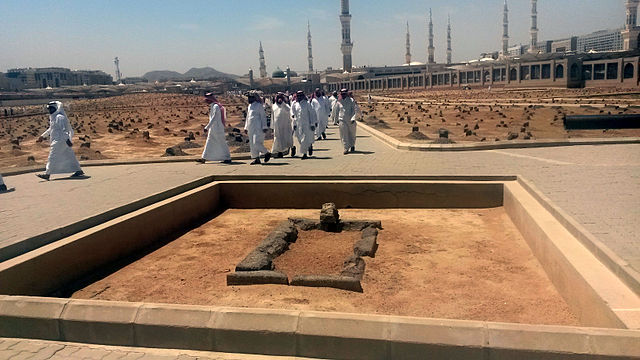Uthman ibn Affan was the third caliph, ruling from 644 until his assassination in 656. Uthman, a second cousin, son-in-law, and notable companion of the Islamic prophet Muhammad, played a major role in early Islamic history. During his reign as caliph, he was known for ordering the official compilation of the standardized version of the Quran that is still being used today.
Calligraphic seal featuring Uthman's name, on display in the Hagia Sophia
Arab-Sasanian coinage during Uthman used Sassanid symbols (star and crescent, fire temple, the picture of the last emperor Khosrau II) by adding Bismillah in Arabic on margin, instead of designing a new one.
Uthman's tomb after demolition by Saudi Arabia
The Rashidun Caliphate was the first caliphate to succeed the Islamic prophet Muhammad. It was ruled by the first four successive caliphs of Muhammad after his death in 632 CE. During its existence, the empire was the most powerful economic, cultural, and military force in West Asia and Northeast Africa.
Coin of the Rashidun Caliphate, circa 647–670, imitating Byzantine coins, featuring a Byzantine figure (Constans II) holding a scepter and globus cruciger
Tombs of caliphs: Abu Bakr and Umar (right), Medina, present-day Kingdom of Saudi Arabia
Muhammad's widow, Aisha, battling the fourth caliph Ali in the Battle of the Camel (16th-century miniature from a copy of the Siyer-i Nebi)
Illustration of the Battle of Siffin, from a 14th-century manuscript of the Tarikh-i Bal'ami







